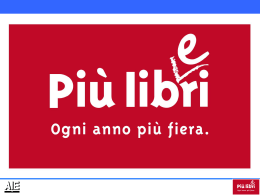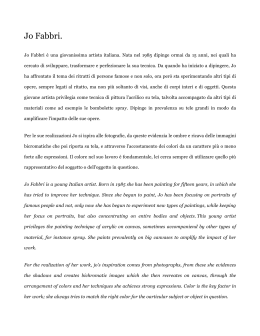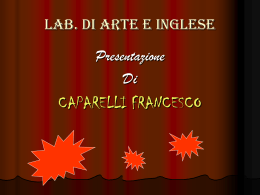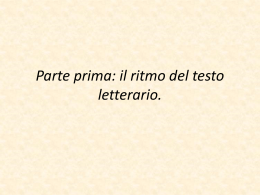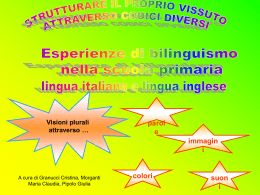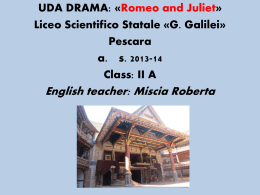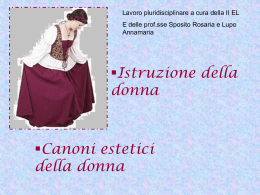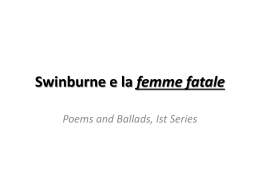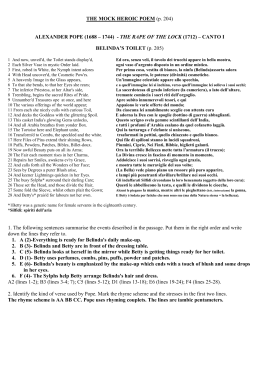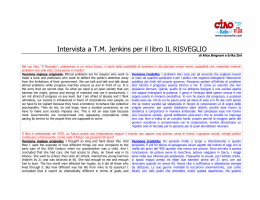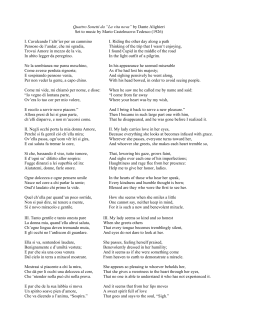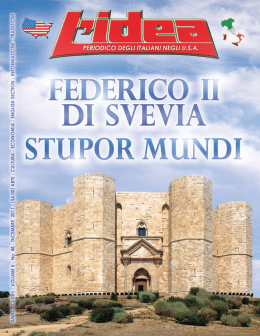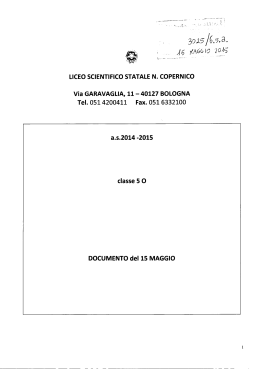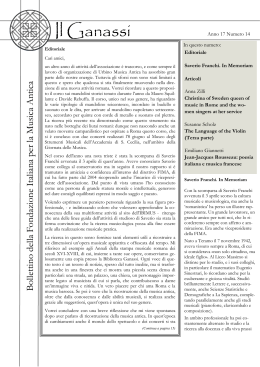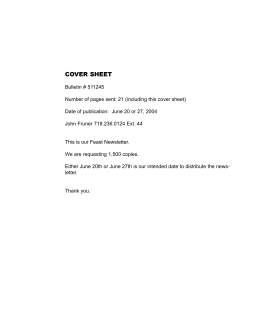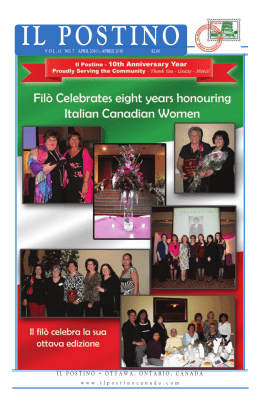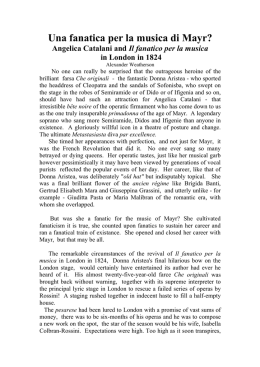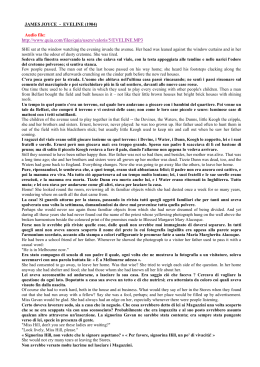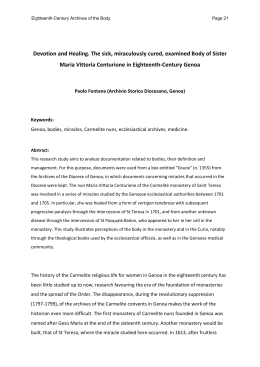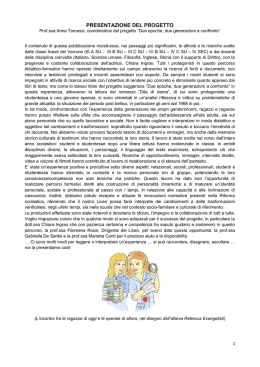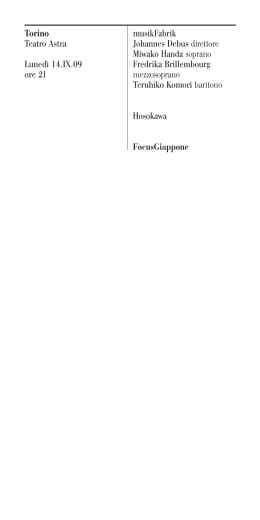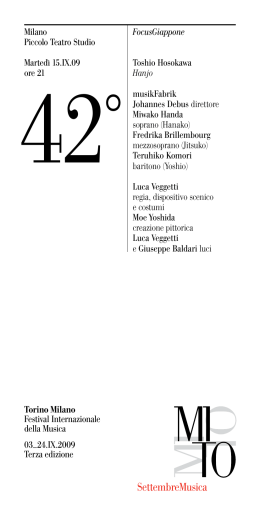PROFILEs Donata Paruccini testo di / text by Anna Foppiano foto di / photo by Giovanna Silva Parigi val bene una mosca Flies and flights to Paris Design può essere anche un breve volo di mosche metalliche. Donata Paruccini, che ha immaginato con ironia pungente piccoli insetti come puntine da disegno (“The Fly”, Opos/1999 e Alessi/2001), ma anche interruttori monouso volanti (2000) e bottoni con buchi decentrati “per una messa in opera creativa” (2003), un volo più lungo lo ha fatto in prima persona, spostando la sua attività, e la sua vita, da Milano a Parigi. Lo sguardo attento della città dove i designer sono scoperti, resi operativi e sostenuti economicamente (un esempio per tutti: il VIA con le fondamentali Cartes Blanches) ha infatti messo a fuoco il suo talento individuando nel mare caotico di un Fuorisalone Design can be many things, even the flight of a swarm of metallic insects. Donata Paruccini, who used irony to transform basic drawing pins into sharp little flies (“The Fly”, Opos/1999 and Alessi/2001), and also imagined flexible, disposable switches (2000) as well as buttons with off-centre holes “for a more creative use” (2003), has made a longer flight of her own, transferring her work, and indeed her whole life, from Milan to Paris. This attentive city where designers are discovered, given work opportunities and financial help (as with VIA and its Cartes Blanches) homed in on her talents and singled out, in the chaos of a Milan Fuorisalone, her “Sgambata” chair, designed for the “Caiazza Memorial Challenge” (2005). 484 19 A sinistra / left: “The Fly”, puntina da disegno / drawing pin, Alessi, 2001; a destra / right: “Clothes Rack”, Eno, 2007. milanese la sua sedia “Sgambata”, progettata per il “Caiazza Memorial Challenge” (2005). Immediato l’invito a lavorare in Francia, un’opportunità giunta al momento giusto e quindi colta, appunto, al volo. È necessario qui un inciso: se negli incontri che cambiano la vita spesso incide la fatalità, non è certo risultato del caso, ma di un percorso coerente, la presenza attiva della Paruccini in tutti i gruppi di ricerca e le iniziative più interessanti che nell’ultimo decennio hanno animato il cosiddetto “sistema design” italiano. Dal suo arrivo a Milano nel 1994 dopo gli studi fiorentini all’ISIA con Jonathan De Pas, e a partire da un apprendistato breve ma intenso nello studio di Andrea Branzi, la Paruccini ha collaborato con Opos e Pandora, esposto al SaloneSatellite, partecipato con continuità a mostre collettive a tema come “Intorno alla fotografia”, “Sensidivini”, “Dolcevita”. Nel gruppo di “Design alla Coop” ha preso parte al fortunato traghettamento del good design nella grande distribuzione. Dove si è progettato con intelligenza, fuori da schematismi, rafforzando in maniera limpida le potenzialità di una rete generazionale che doveva basarsi quasi esclusivamente sulle proprie forze e su idee semplici ma buone, lei c’era. Importante, anche per la varietà dei progetti esposti, la sua presenza alla mostra-censimento “The New Italian Design” curata lo scorso anno dallo stesso Branzi in Triennale. Poi il volo. Il cervello di Donata ha bisogno di fare cortocircuito con le sue mani. Lei osserva, reinventa e compone quello che ha intorno, che può toccare, forme finite o frammenti. Piccole componenti tecnologiche possono diventare ready-made (“Radio da presa diretta”, con Francesco Argenti, 2001); minimi spostamenti di senso possono generare invenzione (posate decorate di plastica “Deluxe”, con Fabio Bortolani, 2000). Servono comunque tempo e una grande libertà d’azione, valori probabilmente condivisi da François Bernard e Jean-Dominique Lèze, fondatori di Eno (Édition Nouveaux Objets, 2006) e “importatori” della Paruccini in Francia. Il programma di Eno è tutto sommato semplice: un gruppo selezionato di designer (Gijs Bakker, Sebastian Bergne, Laurence Brabant, Douglas Legg, Klaus Hackl, Arik Levi, Paola Navone, Donata Paruccini, Polka) si è diviso virtualmente gli spazi di una casa, e ognuno di loro ha progettato per un ambiente specifico. Quello che ha voluto, come ha voluto. La prima collezione, prodotta in buona parte in Cina e in India, ha avuto molto successo. Sono oggetti lineari, non invadenti, utili ma non noiosi. Eno non punta al clamore mediatico, non investe nella novità a tutti i costi ma in una graduale evoluzione, che prevede anche l’allargamento del gruppo di lavoro. Tra i tanti, uno dei pezzi più apprezzati oggi in produzione è “Clothes Rack”, disegnato proprio dalla Paruccini: un appendiabiti composto da sfere di pelle colorata riempite di lenticchie, uno scarto tipologico acuto, un oggetto funzionale e bello “sans trop de bavardage”, come ha scritto “Libération”. Così è lei, del resto. She was immediately invited to work in France, an opportunity that came at just the right moment and which she was quick to seize upon. Now, while destiny certainly does play a part in the meetings that change our lives, Paruccini’s activities with all the research groups and the most interesting initiatives that have given life to Italy’s so-called “design system” over the last decade are not a matter of chance, but the outcome of a series of deliberate choices. In 1994 she came to Milan, having finished her studies at the ISIA in Florence under Jonathan De Pas. After a brief but intense apprenticeship in Andrea Branzi’s studio, she went on to work with Opos and Pandora, and put on regular exhibitions of her work: at the SaloneSatellite and at collective themed exhibitions such as “Intorno alla fotografia”, “Sensidivini” and “Dolcevita”. With “Design alla Coop” she has been also involved in the successful transfer of good design into large-scale retail outlets. She was there wherever intelligent design work was being done, wherever people were thinking outside the box. She worked to strengthen the potential of a generational network that was working under its own steam and coming up with simple but sound ideas. Her most recent major presence, in terms of the wide range of work displayed, was at last year’s exhibition, organised by Branzi himself at the Triennale, which looked back at “New Italian Design”. After that she was really flying. Donata’s brain needs to short circuit with her hands. She observes, reinvents and composes the things around her, the objects she can touch, as finite forms or fragments. Small technological components become ready-made items (such as “Radio da presa diretta”, a radio which plugs straight into the wall, designed with Francesco Argenti, 2001); small shifts in meaning generate invention (as with “Deluxe”, decorated plastic cutlery, designed with Fabio Bortolani, 2000). She needs time though, and great freedom of movement, values that are shared by François Bernard and Jean-Dominique Lèze, founders of Eno (Édition Nouveaux Objets, 2006) who “imported” Paruccini to France. The Eno programme is all in all quite a simple one: a select group of designers (Gijs Bakker, Sebastian Bergne, Laurence Brabant, Douglas Legg, Klaus Hackl, Arik Levi, Paola Navone, Donata Paruccini, Polka) divide up the spaces of a home and each of them designs for a specific space – they can do whatever they want, in any way they please. The first collection, much of which was produced in China and in India, was very successful. These are simple objects, unobtrusive, useful but not boring. Eno does not court media attention, and invests not in new ideas at all costs but looks for things to move along gradually, which also means an increase in the size of the work group. One of Eno’s most popular current items in production is “Clothes Rack”, designed by Paruccini herself. This is basically a set of coloured beanbags on strings (the balls are actually filled with dried lentils), a clever shift away from the typological norm, an object that is both functional and beautiful “sans trop de bavardage”, as “Libération” described it. This is also an expression that sums her up pretty well. Anna Foppiano (Italia, 1964) architetto. Vive a Milano (Italia). Redattore di “Zodiac” (1997-1999) e “Abitare” (2001-2008). Ha curato le edizioni italiane di “Aircraft” di Le Corbusier (1996) e de “L’Iliade” di Mogens Krustrup (2000). (Italy, 1964) architect. Lives in Milan (Italy). Editor at “Zodiac” (1997-1999) and “Abitare” (2001-2008), she also edited the Italian versions of Le Corbusier’s “Aircraft” (1996) and Mogens Krustrup’s “Iliad” (2000). 20 484
Scarica
